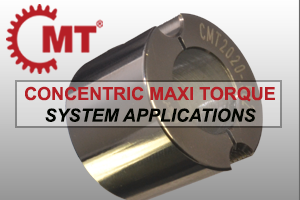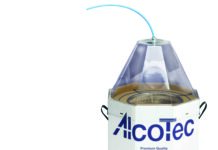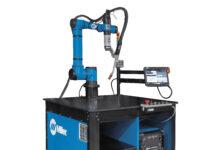The Concentric Maxi Torque connection system, with its mechanical shrink fit, offers tight runout control, precise component positioning and eliminates the need for secondary machinery. CMT’s patented bushing system will solve your most demanding hi-tech synchronous drive challenges and more.
Concentric Maxi Torque
CMT TECHNOLOGY
CMT is a unique bushing attachment system: a single set screw locks the low-taper-angle split bushing in place and eliminates all of the existing attachment issues.
- Bushing system is engineered to assure full surface contact and even clamping pressure with a single set screw.
- Set screw size optimized to provide holding torque in line with shaft diameters and component torques.
- Developed using mathematical and FEA modeling.
- Scalable to any shaft/bore size requirement.
- Lower inertia and better shaft-to-component balance.
- System design assures near perfect hub-to-shaft concentricity when assembled.
CMT BUSHING SYSTEM BENEFITS
Set Screws: CMT has higher torque capacity, lower component run-out, better alignment, and no shaft distortion.
Keyways: CMT has no movement under reversing conditions, maintains both axial and rotational position, and allows for phase control during assembly, increased shaft contact decreases run-out.
Pins: CMT has higher torque capacity, decreased component run-out, and phase control during assembly, easier assembly/disassembly, reusable.
Clamp Collars: CMT requires less space, lower inertia, 360° uniform clamping pressure, lower cost, eliminates component wobble, multiple bore sizes per component.
Other Attachment Systems: CMT requires less space, lower inertia, lower cost, smaller outside diameter for minimum component size with maximum bore.
CMT BUSHING SYSTEM APPLICATIONS
The CMT bushing system solves hi-tech synchronous drive and rotating component issues:
- High speed indexing and reversing in systems using timing belt pulleys and gears
- Systems requiring a high level of component rotational positioning accuracy and precise run-out control
- Designs where reduced inertia and low vibration are desired
- Components required to be assembled and disassembled multiple times during their life
- Rotating mechanisms requiring compact space
- Devices requiring high reliability with minimal maintenance






















